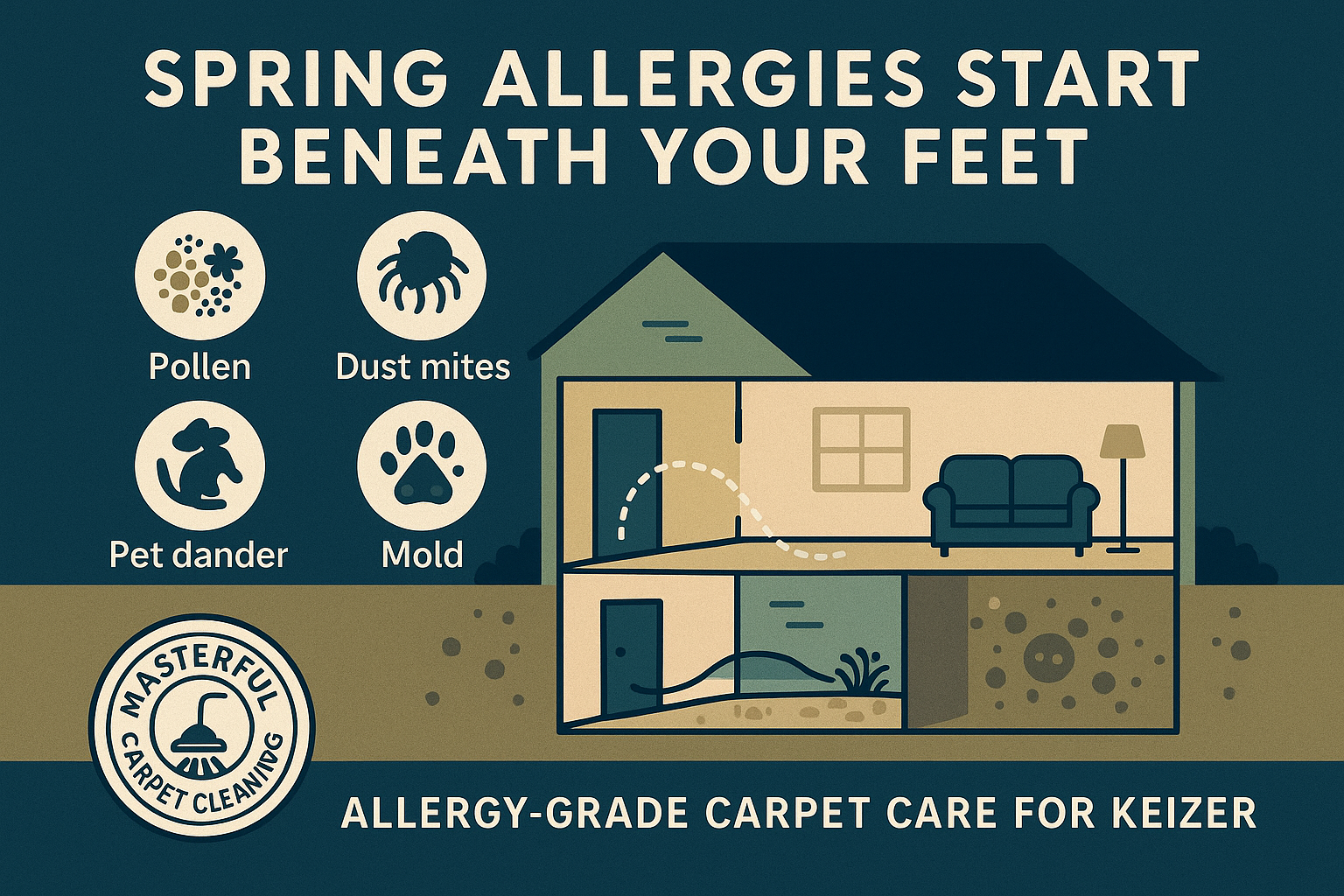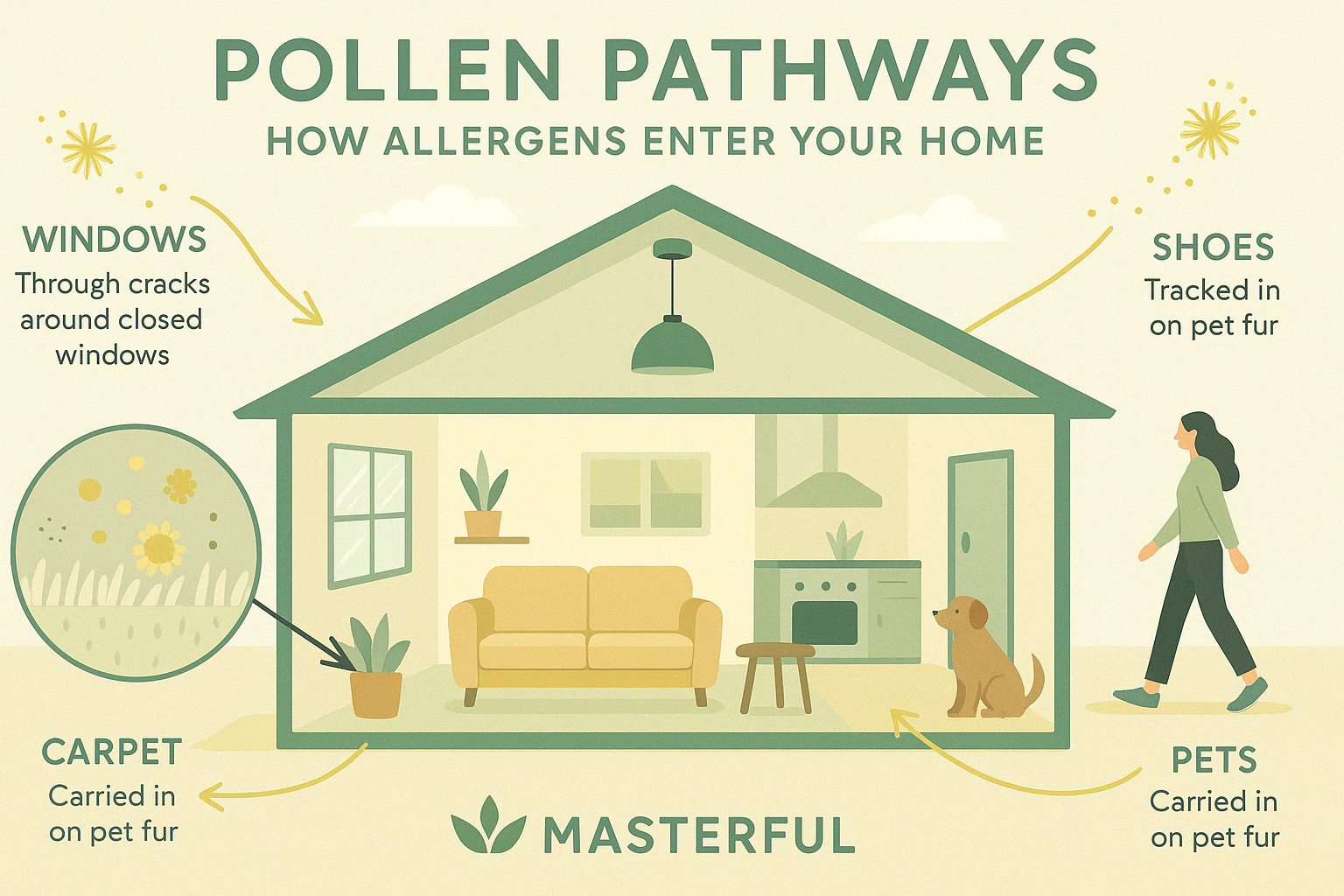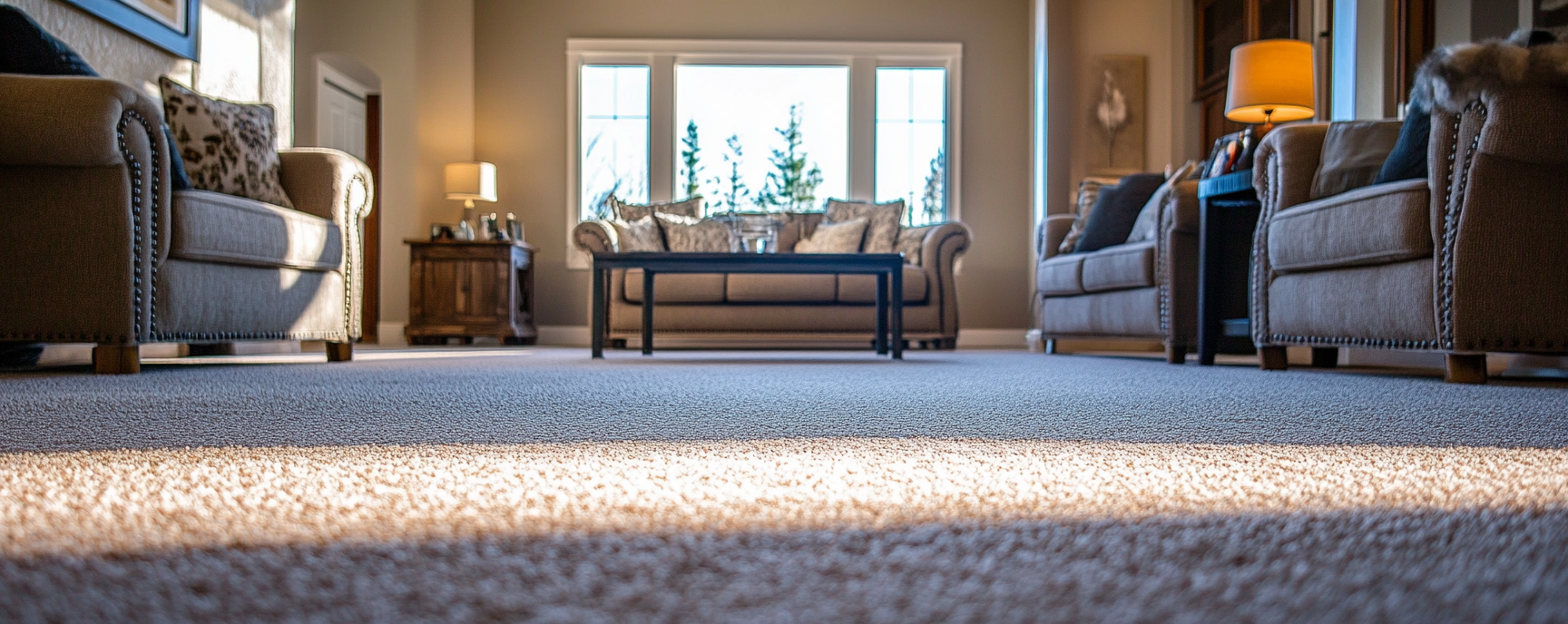Sustainable Carpet Materials: An Overview
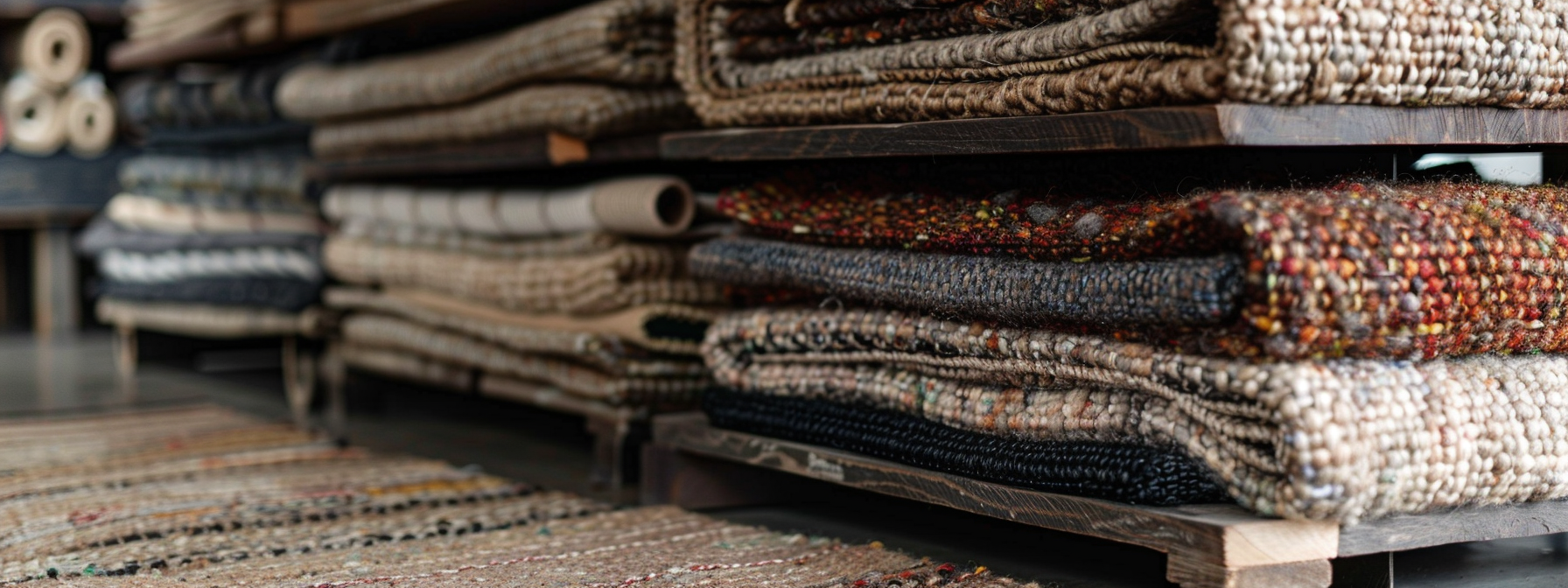
Sustainable carpet materials are becoming increasingly important as consumers and businesses alike prioritize eco-friendly options in home improvement.
These materials not only help reduce environmental impact but also offer benefits such as improved indoor air quality and enhanced durability.
Key Benefits:
- Reduced Environmental Impact: Sustainable carpets are made from natural or recycled materials, reducing waste and conserving natural resources.
- Healthier Homes: Eco-friendly carpets emit fewer volatile organic compounds (VOCs), improving indoor air quality and reducing health risks.
- Durability: High-quality sustainable carpets often have a longer lifespan, reducing the need for frequent replacements and lowering long-term costs.
As demand for eco-friendly home improvement options grows, sustainable carpet materials offer a compelling choice for those looking to create a healthier and more sustainable living environment.
What are Sustainable Carpet Materials?
Sustainable carpet materials are those that are designed to minimize environmental impact throughout their lifecycle. This includes the use of natural fibers, recycled materials, and production processes that reduce resource consumption and pollution.
Differences from Traditional Carpet Materials:
- Natural Fibers: Sustainable carpets often use renewable resources like wool, jute, and sisal, which are biodegradable and have lower environmental impact compared to synthetic fibers.
- Recycled Materials: Carpets made from recycled PET (plastic bottles) or nylon help reduce waste by repurposing materials that would otherwise end up in landfills.
- Low VOC Emissions: Eco-friendly carpets emit fewer harmful chemicals, contributing to better indoor air quality and reducing health risks associated with traditional carpets.
These materials are chosen not only for their environmental benefits but also for their performance and durability, making them a smart choice for eco-conscious homeowners and designers.
By opting for sustainable carpet materials, you are supporting practices that promote a healthier planet and creating a safer, more comfortable home environment.
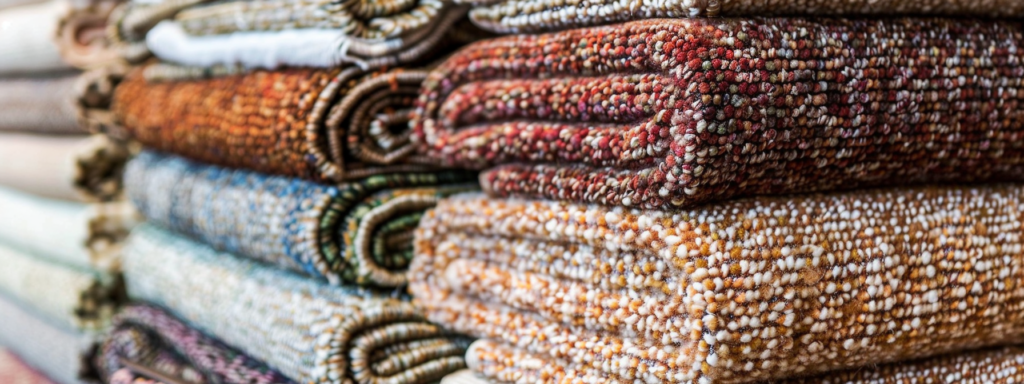
Types of Sustainable Materials
Natural Fibers
Natural fibers used in sustainable carpets are derived from renewable sources and are biodegradable. Some common natural fibers include:
- Wool: Highly durable, soil-resistant, and comfortable underfoot. Wool carpets generally have a lower environmental impact compared to synthetic options and can last many years, reducing the need for frequent replacements.
- Jute and Sisal: These plant-based fibers are 100% biodegradable and offer unique textures and patterns, adding aesthetic appeal to homes. They are best suited for low-traffic areas due to their lower durability compared to wool.
- Organic Cotton: Unlike conventionally grown cotton, organic cotton is produced without harmful chemicals, making it a more sustainable choice for carpets. It reduces pesticide use and environmental degradation.
Recycled Materials
Recycled materials in carpet production help minimize waste and make use of existing resources. Examples include:
- Recycled PET (Polyethylene Terephthalate): Made from recycled plastic bottles, these carpets are stain-resistant, durable, and help reduce plastic waste. They are a great option for those looking to minimize their environmental footprint.
- Recycled Nylon: This material is repurposed from used carpets, discarded fishing nets, and other nylon products. Recycled nylon can be transformed into new yarn multiple times, making it a highly sustainable option that significantly reduces the environmental impact of nylon production.
Eco-friendly Options
In addition to natural and recycled materials, there are other innovative eco-friendly options for carpets:
- Bamboo: Known for its rapid renewability and strength, bamboo is a sustainable choice that offers durability and a modern aesthetic. It grows quickly, making it an excellent renewable resource.
- Cork: Harvested from the bark of cork oak trees, cork regenerates every nine years without harming the tree. It is naturally insulating, antimicrobial, and hypoallergenic, making it a comfortable and sustainable flooring option.
- Reclaimed Wood: This involves repurposing wood from old structures like barns and warehouses, reducing the demand for new timber and conserving forests. Reclaimed wood floors are durable and add a unique, historical character to homes.
These sustainable materials not only help reduce environmental impact but also offer unique benefits in terms of durability, aesthetics, and indoor air quality. Choosing carpets made from these materials supports a more sustainable and healthier living environment.
Benefits of Sustainable Carpets
Environmental Impact
Sustainable carpets significantly reduce the environmental footprint through the use of renewable and recycled materials. These materials, such as wool, jute, and recycled PET (plastic bottles), minimize resource extraction and waste.
Wool, for example, is a renewable fiber that is biodegradable and has a lower environmental impact than synthetic options. Carpets made from recycled materials help reduce landfill waste and promote a circular economy where materials are continuously reused.
Benefits:
- Use of renewable and recycled materials.
- Lower environmental impact compared to synthetic fibers.
- Promotion of circular economy by recycling materials.
Health Benefits
Eco-friendly carpets offer significant health advantages due to their low emission of volatile organic compounds (VOCs) and their ability to improve indoor air quality. Traditional carpets can emit VOCs, which are harmful chemicals that can affect respiratory health.
Sustainable carpets made from natural fibers like wool do not contain these chemicals, reducing indoor air pollution. These carpets can trap allergens such as dust mites and pet dander, further improving air quality.
Benefits:
- Low or zero VOC emissions.
- Improved indoor air quality by reducing allergens.
- Safer for individuals with allergies or respiratory conditions.
Longevity and Performance
Sustainable carpets are designed for durability and long-term performance, reducing the need for frequent replacements. Wool carpets, for example, are highly durable and maintain their appearance even after years of use.
They are resistant to stains and odors, thanks to the natural properties of wool fibers. This longevity not only saves money over time but also reduces waste and environmental impact associated with frequent carpet replacement.
Benefits:
- High durability and long lifespan.
- Resistance to stains and odors.
- Cost-effective due to reduced replacement frequency.
Sustainable carpets are an excellent choice for those looking to reduce their environmental footprint, improve indoor air quality, and invest in durable, high-performance flooring options.

Durability and Maintenance
Sustainable carpets are known for their exceptional durability, often surpassing traditional options. Wool, for instance, is a highly durable natural fiber that can withstand significant wear and tear, making it ideal for high-traffic areas.
Wool carpets retain their appearance even after years of use due to the natural elasticity of wool fibers, which allows them to bounce back from compression. This resilience, combined with wool’s natural resistance to stains and odors, ensures that wool carpets can last for decades with proper care.
Durability Features:
- Wool: Durable and resilient, retains appearance over time.
- Recycled PET: Made from recycled plastic bottles, these carpets are stain-resistant and long-lasting.
- Jute and Sisal: Best for low-traffic areas due to lower durability but offer unique textures and aesthetics.
Maintenance Tips:
- Regular Vacuuming: Helps remove dust, allergens, and debris. Use energy-efficient vacuums approved for your carpet type.
- Spot Cleaning with Natural Ingredients: Use white vinegar, baking soda, or lemon juice for minor stains and spills. These natural solutions are effective and eco-friendly.
- Eco-Friendly Cleaning Products: Opt for biodegradable and natural cleaning solutions to preserve the carpet’s quality and longevity.
- Rotate and Rearrange: Rotate carpets every six months in high-traffic areas to ensure even wear. Use furniture coasters to distribute weight evenly and protect fibers.
- Air Out Your Carpets: Periodically place carpets in a well-ventilated area, avoiding direct sunlight, to naturally refresh them and remove odors.
Cost and Environmental Impact
While the initial cost of sustainable carpets can be higher than traditional options, they often prove more cost-effective in the long run due to their durability and reduced need for replacement. For example, wool carpets, despite their higher upfront cost, are a sustainable investment as they can last for decades with proper maintenance.
Cost Factors:
- Initial Investment: Higher upfront costs for natural and high-quality recycled materials like wool and recycled PET.
- Long-Term Savings: Reduced frequency of replacement and lower maintenance costs contribute to long-term savings.
Environmental Impact:
- Reduced Waste: Sustainable carpets made from natural or recycled materials help reduce waste and promote a circular economy by reusing materials that would otherwise end up in landfills.
- Lower Carbon Footprint: The production of sustainable carpets is more energy-efficient and involves fewer emissions compared to traditional synthetic carpets, contributing to a lower overall carbon footprint.
- Healthier Indoor Environment: Low or zero VOC emissions from eco-friendly carpets improve indoor air quality and reduce health risks associated with traditional carpets.
While sustainable carpets may have higher initial costs, their long-term financial and environmental benefits make them a worthwhile investment for both homes and commercial spaces.
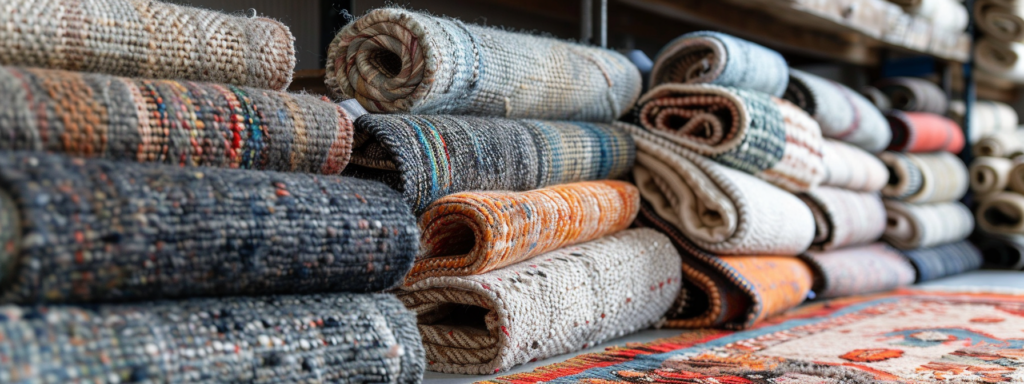
Treat Your Carpet the Masterful Way
Choosing sustainable carpet materials offers numerous benefits for both the environment and your home. These eco-friendly options are made from renewable or recycled materials, emit fewer VOCs, and have a longer lifespan compared to traditional carpets. They contribute to better indoor air quality, reduce landfill waste, and often provide better durability and performance.
Key Points:
- Eco-friendly Materials: Made from natural fibers like wool, jute, and recycled PET.
- Health Benefits: Low or zero VOC emissions improve indoor air quality.
- Durability: Designed to last longer, reducing the need for frequent replacements.
- Environmental Impact: Lower carbon footprint and waste reduction.
By opting for sustainable carpets, you are making a positive impact on the environment and ensuring a healthier living space for your family. Embrace the benefits of eco-friendly carpeting and contribute to a greener future.
Action Steps:
- Explore Sustainable Options: Look for carpets made from natural fibers like wool, jute, and recycled materials.
- Take Advantage of Discounts: Look for promotions and discounts on sustainable carpets to make your investment more affordable
To make a meaningful contribution to the environment and enhance your home’s comfort, consider investing in sustainable carpet materials for your next flooring project. These options not only provide aesthetic appeal but also ensure long-term benefits for your health and the planet.
Author
-

As the Co-Owner of Masterful, Randy has been providing quality cleaning services to the Salem and Portland areas of Oregon for many years. He has built a reputation for excellence in the industry. His team take prides in using the latest cleaning techniques and technologies to deliver exceptional results every time.
View all posts


